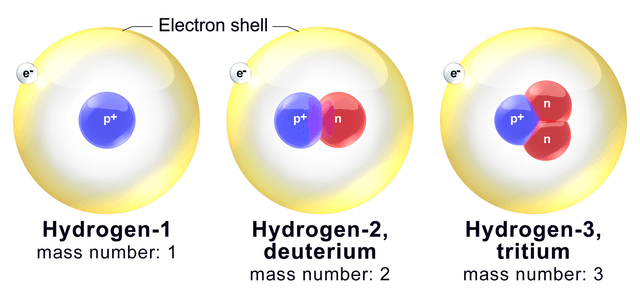Hydrogen is the chemical element with the symbol H and atomic number 1. Hydrogen is the lightest element

Facts
Hydrogen is the most abundant element in the universe.
Hydrogen is denoted with the symbol ‘H’.
Antoine Lavoisier named it hydrogen because it “creates water” when it is burned.
Hydrogen has a boiling point of −423.182 °F.
Hydrogen has a melting point of −434.49 °F.
Majority of the Universe’s mass (75%) is comprised of Hydrogen.
Hydrogen is nonmetallic, except at extremely high pressures.
Hydrogen’s atomic number is 1.
Hydrogen is around 14 times lighter than air.
Hydrogen is the lightest element with a standard atomic weight of 1.008.
Hydrogen is so light that it cannot be contained by the Earth’s gravity.
The hydrogen atom has a nucleus consisting of one proton and one electron.
Hydrogen is colorless, odorless, tasteless and nontoxic.
Hydrogen was discovered as an element by Henry Cavendish until 1766.
Hydrogen has three naturally occurring isotope.
Most of the hydrogen on Earth exists in molecular forms such as water and organic compounds.
Hydrogen is the Greek word meaning water forming.
Hydrogen is extremely flammable.
Hydrogen is the only element that does not contain any neutrons.
Jupiter is mostly composed of Hydrogen.
The Sun burns Hydrogen and produces Helium.
Hydrogen produces the light from the stars and the sun.
Hydrogen has three naturally occurring isotopes denoted as 1H, 2H and 3H.
hydrogen isotope known as deuterium contains one proton and one neutron in the nucleus.
tritium isotope contains one proton and two neutrons in its nucleus.
The first hydrogen-filled balloon was invented by Jacques Charles in 1783.
Hydrogen makes up more than 90 percent by number of atoms.
Molecular clouds of H2 are associated with star formation.
Deuterium is used in nuclear fusion reactions.
Henri Giffard invented the first hydrogen-lifted airship in 1852.
James Dewar liquefied hydrogen for the first time in 1898.
James Dewar produced solid hydrogen the following year.
The first hydrogen bomb was tested on November 1, 1952.
Liquid H2 is used in cryogenic research.
NASA has investigated the use of rocket propellant made from atomic hydrogen.
The nickel hydrogen battery was used for the first time in 1977 aboard the NTS-2.
The Hubble Space Telescope is also powered by nickel-hydrogen batteries.
Heavy water which consists of deuterium insteade of regular hydrogen, was discovered in 1932.
Hydrogen’s principal industrial application is in the manufacturing of ammonia.
Water is made up of Hydrogen and Oxygen.
Gaseous hydrogen has a specific gravity of 0.0696.
The concentration of hydrogen ions dictates whether a solution is basic or acidic.
The term “pH” stands for “potential of hydrogen” or “power of hydrogen”.
Around 3 billion cubic feet of hydrogen is produced each year in the United States alone.
